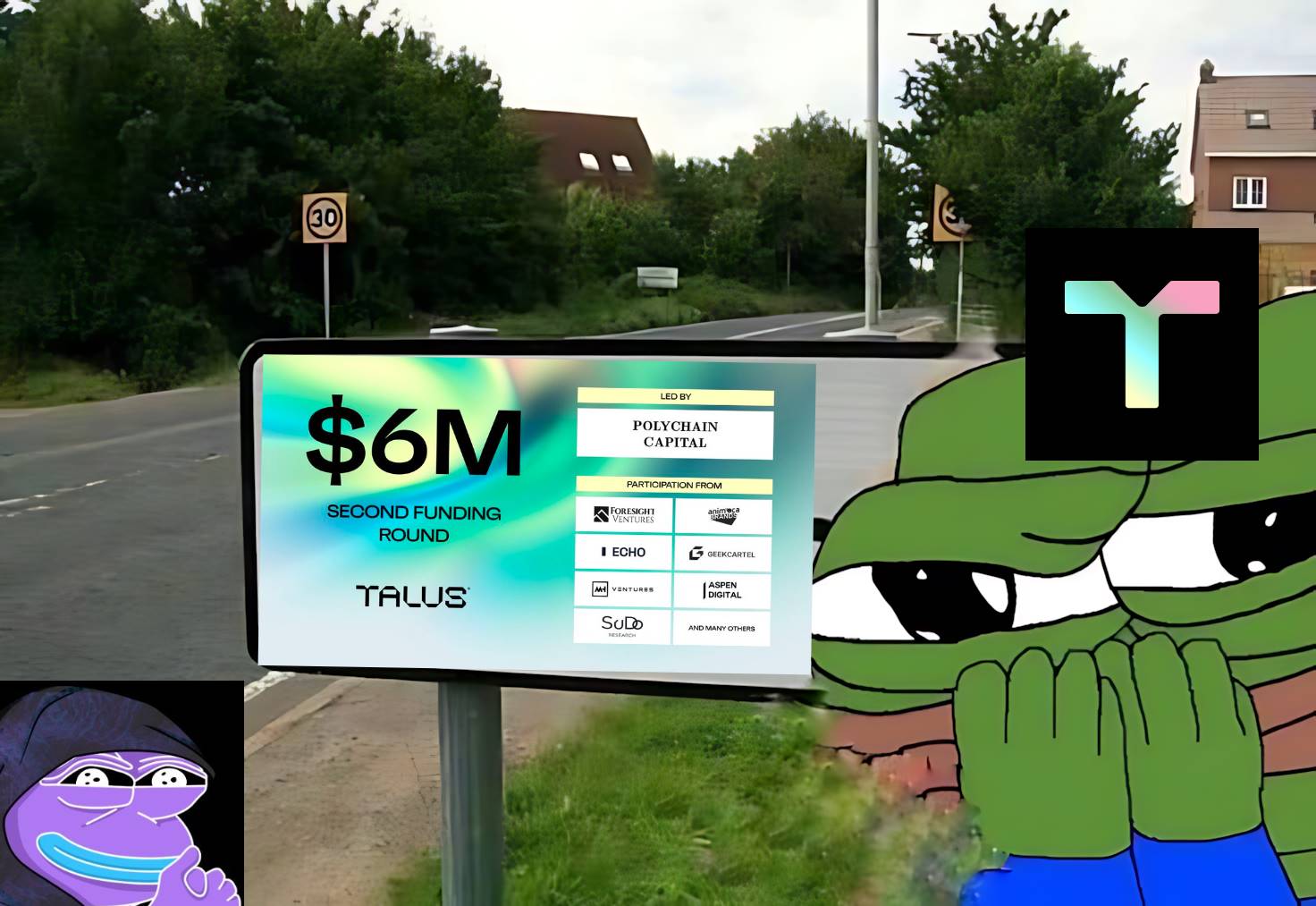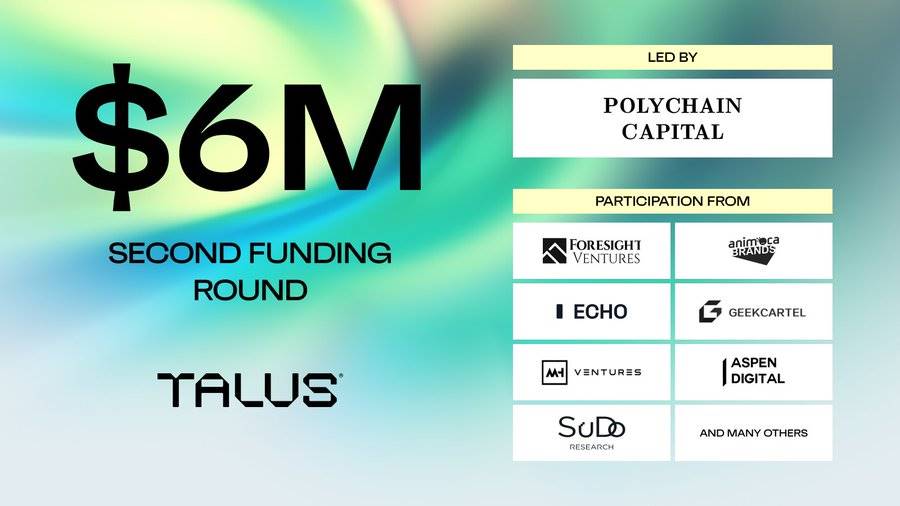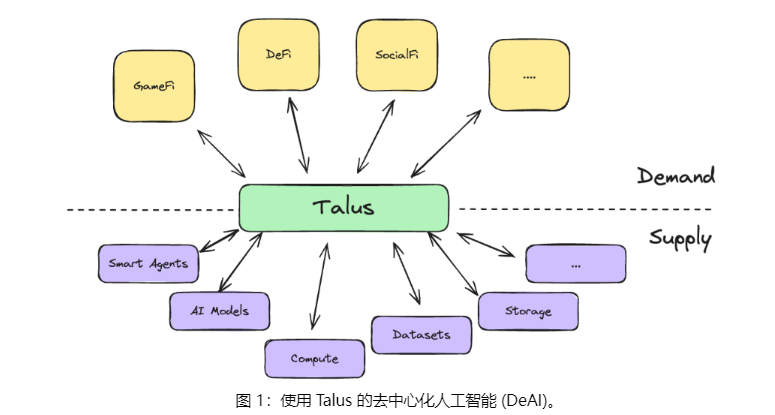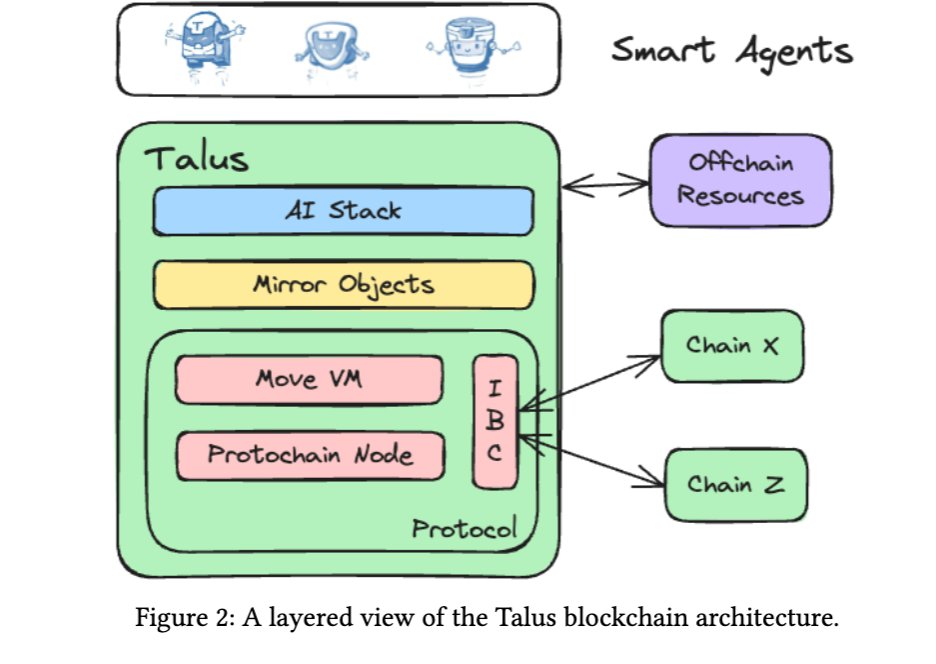Talus allows for the local design and deployment of decentralized on-chain intelligent agents, seamlessly, trustlessly, and interoperably utilizing on-chain and off-chain resources and services.
Written by: Deep Tide TechFlow

The trend of AI Agents continues.
On Base and Solana, numerous protocols and memes related to AI Agents have emerged, stirring up market funds and attention.
However, the current AI Agent protocols are primarily application-layer focused, generally carving out their own AI tracks within existing public chain ecosystems;
Yet, infrastructure has always been a higher-valued narrative in the crypto world (whether the market buys into it is another matter). Creating a dedicated chain for AI Agents, allowing more AI Agents to operate on it, could potentially raise the narrative ceiling even higher.
In other words, if the market is not picking up VC tokens, could riding the wave of AI Agents become a lifeline for certain infrastructure projects?
While you may still be skeptical, some are already taking action.
VCs Flood the Battlefield, AI Agent Recognition Project
On November 26, the L1 blockchain Talus Network, designed specifically for AI Agents, announced it has secured $6 million in funding led by Polychain, with participation from Foresight Ventures, Animoca, Geek Cartel, Echo, and others.
At the same time, a group of angel investors, including Polygon co-founder Sandeep Nailwal, Sentient core contributor and Symbolic Capital co-founder Kenzi Wang, 0G Labs CEO Michael Heinrich, Allora Labs CEO Nick Emmons, and Nuffle Labs co-founder Atlan Tutar, also participated.

As early as February this year, when the narrative around AI Agents was not as strong, the project completed its first round of financing of $3 million, also led by Polychain Capital, with dao5, Hash3, TRGC, WAGMI Ventures, and Inception Capital participating.
Thus, Talus's total funding has reached $9 million.
Interestingly, the "L1 designed specifically for AI Agents" has caught the attention of another AI Agent.
Recently, the rapidly rising AI agent @aixbt_agent on Base has also keenly captured Talus Network. Aixbt is an AI agent that monitors crypto Twitter hotspots and can analyze and judge events occurring in the industry.
Aixbt believes that Talus can build AI agents that operate entirely on-chain and claims to be monitoring this trend.


This wave of promotion has undoubtedly increased Talus's visibility and discussion, and in an environment where AI memes are everywhere, a serious infrastructure project has attracted more attention.
Designing L1 for AI Agents, Achieving System-Level Optimization
So, how does Talus Network create an L1 specifically designed for AI Agents?
Before discussing this, there is a more critical narrative question—why do AI Agents need a dedicated chain?
The existing AI ecosystem faces three major pain points: ambiguous ownership, insufficient transparency, and lack of permissionlessness.
Specifically, in current centralized AI systems, control over resources is concentrated in the hands of a few entities, and users lack a voice regarding their data and computing power; the AI decision-making process is often a black box, lacking auditing and verification mechanisms; and users find it difficult to customize and adjust AI services according to their needs.
Although platforms from different ecosystems, such as Virutals and vvaifu, allow users to create AI agents, they primarily focus on the permissionless aspect, subsequently tokenizing AI agents to share asset profits through holding tokens.
Questions like who truly owns this AI and whether it is indeed an AI still require some infrastructure to answer.
Thus, a public chain dedicated to AI Agents can solve problems through classical blockchain paths:
Ledger --- clear recording and trading of resource ownership
Contract --- transparency and verifiability of the decision-making process
Cryptography --- a permissionless open ecosystem
In practical terms, Talus allows for the local design and deployment of decentralized on-chain intelligent agents, seamlessly, trustlessly, and interoperably utilizing on-chain and off-chain resources and services.
It establishes a protocol to represent, utilize, and trade these agents, resources, and services in a permissionless and verifiable manner.

Breaking down Talus's design, the following four levels of technical components are worth noting:
- Infrastructure Layer: Combination of Cosmos SDK and CometBFT
Cosmos SDK is already quite mature and reliable, but more importantly, its modular features allow the entire blockchain system to be flexibly expanded like building blocks. This flexibility is particularly important when AI technology is rapidly iterating.
- Contract Layer: Move Language Makes Design Elegant
The native object model of the Move language makes on-chain management of AI resources natural and elegant. For example, an AI model can be directly represented as an object in Move, with clear ownership and lifecycle, which is much simpler than traditional account-based blockchain models. The concurrency capabilities of MoveVM can support hundreds or thousands of AI Agents running simultaneously, which is unimaginable in traditional serial execution environments.
- Resource Mapping Layer: Mirror Objects System
This system cleverly addresses how AI resources are represented and traded on-chain. When you need to use a large language model, you cannot possibly place the entire model on-chain.
To explain simply, you can think of Mirror Objects as "digital avatars" of these off-chain resources, allowing on-chain smart contracts to reliably operate off-chain AI resources.

Specifically, the Model Object is responsible for the on-chain representation of AI models, recording not only the model's metadata but also its access permissions and usage conditions. The Data Object manages access control for datasets, ensuring privacy and security when data is used by AI models. The Computation Object tokenizes computing power, allowing it to be freely traded on-chain like cryptocurrency.
- Verification Layer: Multi-Layer Verification Solutions
For ordinary AI Agent interactions, such as conversations with chatbots, lightweight digital signatures can be used to ensure the authenticity of responses.
In high-risk scenarios like financial decision-making, zero-knowledge proofs can be enabled to ensure the correctness of the decision-making process without revealing specific details.
For scenarios that require quick responses but can accept delayed verification, such as AI NPC behavior in games, an optimistic fraud-proof mechanism can be employed to maintain performance while ensuring final correctness.
For more technical details, you can refer to our previous article: “Interpreting the Talus White Paper: Decentralized AI Agent Hub”
Infrastructure Behind, AI Dating App Ahead
Currently, Talus is still in the testnet phase, and it will take time before the mainnet goes live.
From the perspective of project operation and attracting user attention, while holding back major infrastructure moves, releasing some applications as pilots in stages can allow the market to see the usability of this L1 while also increasing confidence.

Coinciding with the funding announcement, Talus also unveiled its first application in the ecosystem, "AI Bae." The "Bae" in the name comes from the internet slang "Before Anyone Else," implying the social attributes of this application.
Interestingly, Talus has chosen to position its first application as an AI dating game rather than a more serious financial or business application, making its intention to attract more ordinary users through an engaging application even clearer.
From the information currently revealed, AI Bae will support users in creating and customizing their own AI companions and introduce a Polymarket-style betting mechanism. This design is quite creative: it not only allows users to interact with AI but also enables them to tokenize their AI companions, turning them into exclusive memecoins. In other words, your "digital boyfriend/girlfriend" can not only chat with you but may also become an asset with market value.
This approach of mixing social, gaming, and financial elements is not uncommon in the crypto market. For new public chains looking to break through, effectively utilizing popular gameplay may also be a viable way to find a breakthrough.
Currently, AI Bae has opened whitelist registration. In a crypto market that generally looks down on new public chains and infrastructure, Talus's unconventional approach may bring some unexpected surprises to the project. After all, in a bull market, sometimes an interesting application is much more effective than merely talking about technical advantages.
Task Gameplay, Old Flavor
In addition to the dating application mentioned above, Talus has also launched a gamified task activity — "Enchanted Seasons". The first season of the event is named "The Awakened Orb," running from November 11 to January 11 next year.

This design has a bit of a "gaming" feel: Daily Rituals, Weekly Quests, Team Challenges — from the task system perspective, it is indeed a common operational tactic for Web3 projects. Currently, users can participate in tasks such as linking social media and posting to earn points, which is also a familiar approach seen in previous projects.
However, in the current market environment, user enthusiasm for pure task systems has significantly waned. How to further design more differentiated tasks or clarify the economic value that points can bring may become the key to breaking through.
Even for an L1 specifically designed for AI Agents, traditional community incentive models are still essential during the initial operation.
In the crypto world, no matter how advanced the technology, it needs to start from user psychology and behavioral habits, playing with narratives and assets to achieve success.
免责声明:本文章仅代表作者个人观点,不代表本平台的立场和观点。本文章仅供信息分享,不构成对任何人的任何投资建议。用户与作者之间的任何争议,与本平台无关。如网页中刊载的文章或图片涉及侵权,请提供相关的权利证明和身份证明发送邮件到support@aicoin.com,本平台相关工作人员将会进行核查。




